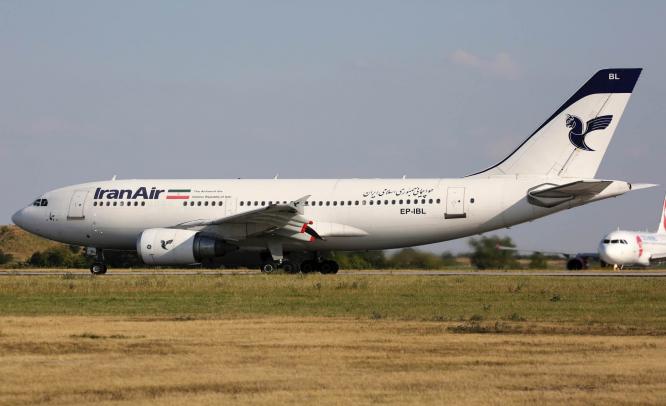Suparna Goswami Bhattacharya
There is pent-up demand after years of sanctions but risks remain
June 10, 2016: Iran has remained outside the international business community for close to 40 years now. Hence when sanctions were lifted this January, it was a gold rush for many. Being the 29th largest economy by GDP, Iran’s return to the global economy is expected to generate a windfall for its civil aviation industry.
The potential is immense due to the pent-up demand after decades of sanctions. On a purchasing power parity (PPP) basis, the size of Iran’s economy sits somewhere between that of Australia and Turkey whose commercial airline fleets are in the range of 500-600 aircraft. In sharp contrast, Iran’s airline industry is believed to have an operational commercial fleet of just 175 aircraft, with one of the highest average ages in the world. A further 40 aircraft are grounded due to inability to maintain their airworthiness, an impact of sanctions.
Understandably, within hours of accepting the conditions laid out for lifting of sanctions, Iran announced a number of commercial deals, including one with Airbus for 118 aircraft with a valuation of $25 billion. Justin Dubon, Airbus Head of Global News, says the agreement is a significant step in the overhaul and modernisation of Iran’s commercial aviation sector and Airbus stands ready to play its role in supporting the process. “It has been publicly acknowledged in recent months that there is a need for some 400 new passenger aircraft to modernise and overhaul Iran’s commercial aviation sector, and this figure we believe is not exaggerated,” says Dubon.
Officially, Iran has quoted 581 as the number of aircraft it intends to fly by 2026.
John Strickland, director, JLS Consulting, says the Airbus and Iran Air agreement is only the beginning. “Demand for travel to/from Iran will be boosted by the large Iranian communities living in different parts of the world, including Europe and the USA,” says Strickland. There are estimated to be 5 million Iranians living abroad, many of whom will be looking to visit a more liberal Iran.
Boost to tourism
Iran scores high even as a tourist destination — it is home to 19 UNESCO World Heritage sites — and is looking to welcome 20 million tourists a year in the next 10 years.
Binit Somaia, director (South Asia) at Centre for Asia Pacific Aviation (CAPA), a consulting and research practice firm, says Iran currently receives around 5 million visitors annually of which approximately 50% is religious traffic to the important Shia shrines in the country. “A large proportion of the balance consists of people of Iranian origin. Pure leisure tourists are very few, but we expect the number to increase significantly as the market opens up. Iran offers a diverse range of unique tourism experiences, diverse natural attractions, and activities from skiing to diving,” he says adding that there is a need to invest in new hotel capacity to support the projected growth. Inbound traffic will also be boosted by increasing business and trade activity, adds Somaia.
The risks
However, despite all the opportunities there are risks involved as well.
With sanctions relaxed one is still faced with the challenge of entering a difficult market. Iran, according to latest data by Transparency International, ranks 130th out of 168 countries on the Corruption Perception Index.
Somaia feels that though Iran has the ability to absorb 300 aircraft over the next five years, there is a question mark on whether it will be able to do so. “I do not know how much of this is feasible in practice. Even in mature markets, such a rate of growth would place immense pressure on airport and airspace infrastructure. And it is will be particularly challenging for Iran, as the aviation ecosystem will need to adapt to a generational leap forward in aircraft technology,” he says.
Paul Lyons, Strategy Director, IBA (International Bureau of Aviation), states that another area requires more clarification is US licence approval for any aircraft containing more than 10% components from US companies.
Lyons, in his report titled ‘Iran: Minimising risk and Maximising opportunity’, states that regardless of the fanfare, cash is at a premium and many of the airlines are already heavily in debt. “This raises two concerns: how will purchases be funded, and what options will the seller have if a deal goes sour? The banking system is out-dated and there are question marks around the robustness of the legal system – unsurprising given the lack of international interaction,” Lyon writes in the report.
Though there are some who fear a return of sanctions, in practicality it will be difficult. “It gets tougher to reinstate sanctions as Iran’s economy gets tied to the world economy. That said, if Iran keeps being belligerent (threatening Israel with annihilation), many companies will hold back. The lower the price of sanctions coming back, the easier they are to reinstate,” says Addison Schonland, founder and partner, AirInsight, a commercial aviation consultancy.
“Despite the positive nature of the Airbus deal, the majority of industry leaders we have spoken with highlight the various hurdles to negotiate – be they legal, regulatory, political, or commercial. Care will be needed in order to minimise risk and maximise opportunity,” adds Lyons.


